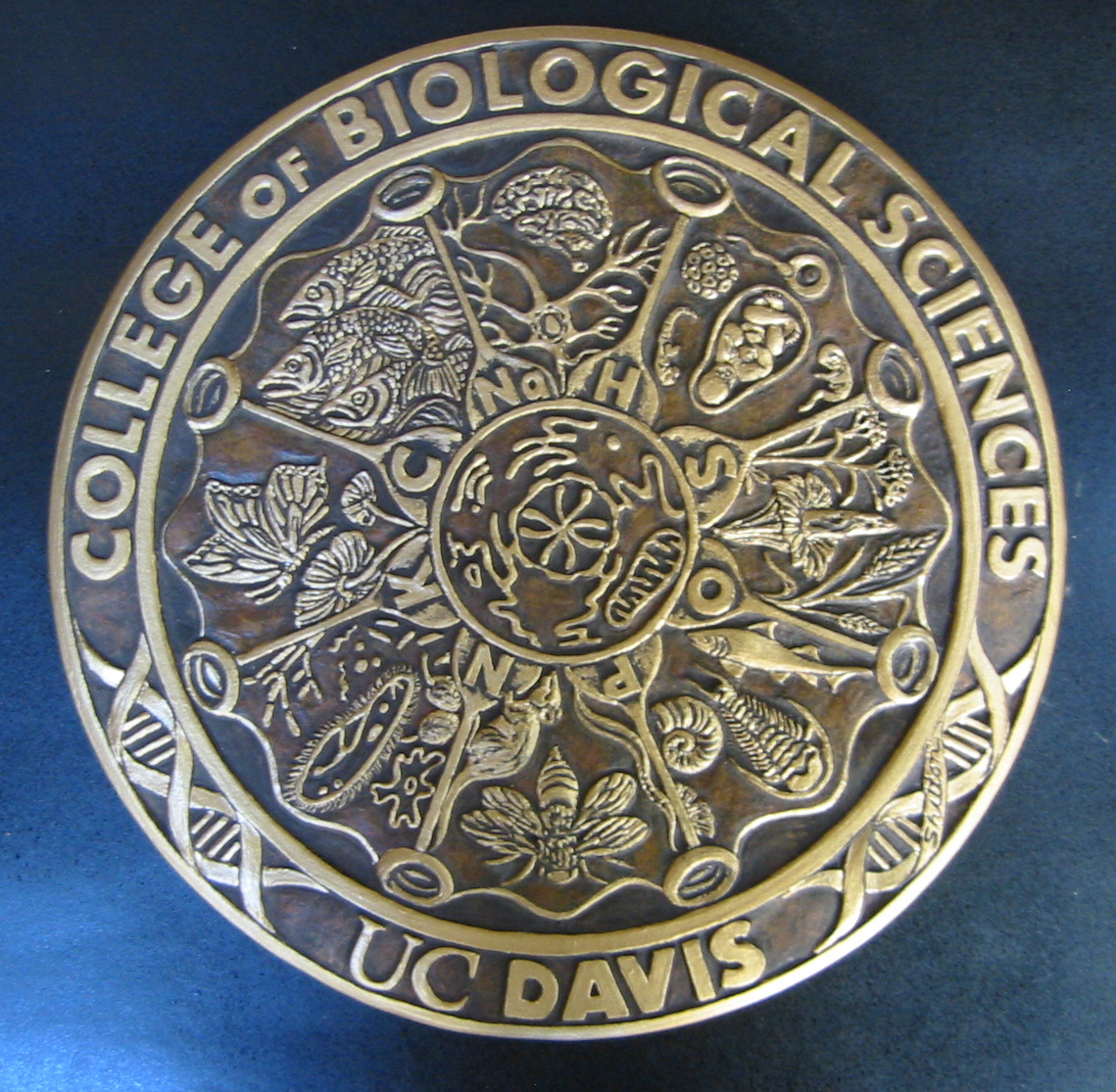
In creating the College of Biological Sciences Medal, the challenge was to design a piece of art that was aesthetically compelling, but which had conceptual integrity as well, while also representing the broad range of academic disciplines included in the five departments of the CBS.
Inspiration came from the work of Ernst Haeckel, a 19th century zoologist, illustrator, and ardent supporter of Charles Darwin. Among his stunning illustrations of radially symmetrical organisms is a small drawing that suggested the organizing framework for the medal.
The form encompassing the detailed imagery in the medal is a diatom, a unicellular, eukaryotic form of phytoplankton. Diatoms themselves are useful in the study of evolution, ecology, and the environment, as well as in the study of plant biology and cellular and microbiology—all areas of study falling under the umbrella of the CBS.
The circle in the middle of the diatom represents a living cell. At its center is a stylized nucleus with a symmetrically arranged pair of chromosomes. The nucleus is surrounded by several organelles, including the endoplasmic reticulum, the Golgi apparatus, and the mitochondrion. The letters bordering the cell represent key elements necessary for life, with carbon, oxygen, hydrogen, and nitrogen on one set of axes, and sodium, phosphorus, sulfur, and potassium on the other.
Thus, the visual center of the design is also the center conceptually, as it represents the study of genetics, cell biology, and biochemistry, which together are central to the study of any discipline within the College of Biological Sciences.
The eight panels created by the lines radiating outward from the cell contain imagery representing many of the areas of instruction and research that fall within the five departments of the college.
The fields of neurobiology, physiology, and behavior are represented by the image of a brain and a neuron, depicted in the top panel.
Proceeding clockwise, the panel featuring the fusion of gametes and the various developmental stages of the human embryo and fetus represent the essential role that the study of reproduction and development plays in the study of biology.
In the next panel, the images of Arabidopsis thaliana and Triticum (wheat) represent the importance of the field of plant biology in the research areas of molecular and cell biology, genetics, biotechnology, and agriculture. Also featured is Amorphophallus titanium (Ted), perhaps UC Davis’ most notorious resident!
The study of evolution is represented in the next panel by the images of organisms that form part of the fossil record, from the Cambrian Era to the Modern Era, including a trilobite, a cephalopod, a cartilaginous fish, and a gingko leaf.
The importance of model organisms in the study of the biological sciences is depicted by the images of Drosophila melanogaster, Caenorabditis elegans, and a laboratory mouse.
The panel representing the study of microbiology includes a paramecium, an amoeba, red and green algae, and the three forms of bacteria.
The panel portraying the pollination of a flower by a butterfly illustrates the concept of mutualism, which, in turn, represents the broader concept of interdependency that is central to the study of ecology.
The image of the salmon swimming upstream represents the importance of the work of the Bodega Marine Laboratory, and, more generally, the research in the areas of ecology for the sustainability of California fisheries. Beyond this literal depiction, this final panel is a symbolic representation of the cycle of life itself, and the importance of perseverance in the quest for knowledge in the study of biological sciences.